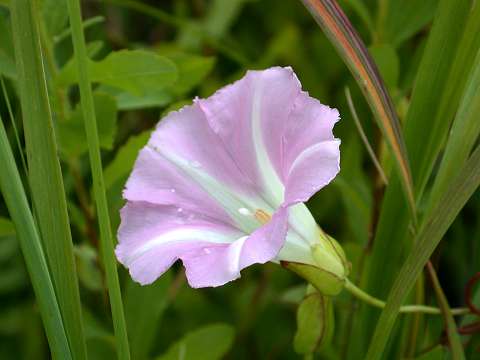

Calystegia sepium - (image 1 of 5)
Taxonomy
Family: Convolvulaceae
Habitat
Best known as a plant of ruderal areas like pastures, thickets, weed lots. It also occurs in calcareous meadows and prairies, where it's weedy nature is far less apparent. I often find it growing on chain-link fence.
Associates
Varies depending on habitat.
Distribution
Widespread in North America and Eurasia. Our plants include native and introduced forms.
Morphology
Twining vine to 3 m, occasionally trailing. Leaves with a triangular to oblong silhouette, hastate or sagittate, 5-10 cm, on long petioles. Flowers solitary on peduncles 5-15 cm, with two large bracts inserted just beneath the calyx; bracts ovate or oblong, 1-2 cm, often cordate at the base, mostly covering the calyx; corolla pink or white, 4-7 cm, resembling that of a morning glory.
Notes
Flowers early June to late September
Wetland indicator: Facultative
Considered to be a weed in some states. Often confused with the smaller and far more weedy Convolvulus arvensis; introduced from Europe with smaller bracts that are far removed from the calyx.
References
Gleason, Henry A. and A. Cronquist. 1991. Manual of Vascular Plants of Northeastern United States and Adjacent Canada. Second Ed.
The New York Botanical Garden. Bronx, NY
Swink, F. and G. Wilhelm. 1994. Plants of the Chicago Region.
Indiana Academy of Science. The Morton Arboretum. Lisle, Illinois.
USDA, NRCS. 2002. The PLANTS Database, Version 3.5 (http://plants.usda.gov).
National Plant Data Center, Baton Rouge, LA 70874-4490 USA
|
© Michael Hough 2004 |